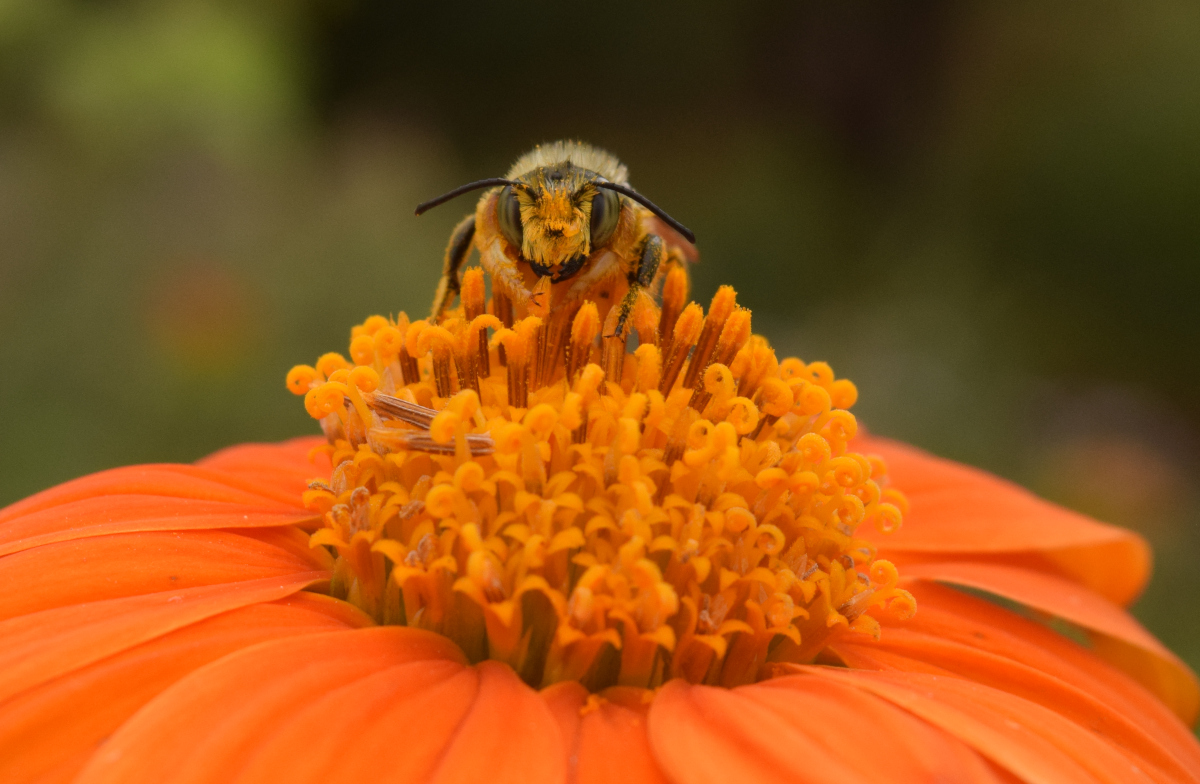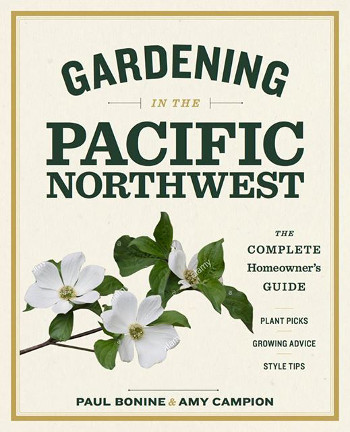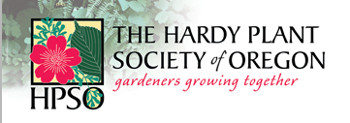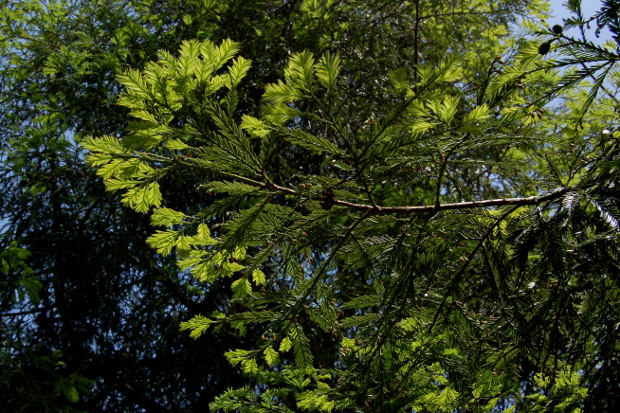
A leafcutter bee visits my garden.
On a warm, sunny day in late spring last year, I discovered I’d unwittingly constructed a condo for one of our precious native pollinators. Some years before, I’d stacked a pile of twigs and small branches against the south side of the house to use as kindling. Well, we hadn’t had a fire in the fireplace for a few years, and in the meantime, dozens of teeny bees had found a home. The shiny, black bees were squeezing themselves into the tiniest cracks and holes in the twigs. After some research, I determined they were small carpenter bees in the genus Ceratina. They were mothers provisioning their nests.
About 30 percent of North America’s 4,000 bee species nest aboveground in twigs, stems, old beetle burrows in wood, or other narrow crevices. These gentle, nonaggressive bees create tiny nursery rooms inside the stems. They fashion partitions from various materials; for example, small carpenter bees use pith and their own saliva, mason bees use mud, and leafcutter bees use pieces of leaves or petals. The mother places a little ball of pollen mixed with nectar in each cell and lays an egg on it. The larvae will develop on the food their mother has left for them, overwinter in pupal form inside the stem, and emerge the following year as adults to start the cycle over again.
If you want more of these critters in your garden—and why wouldn’t you? They’re great pollinators and a joy to watch!—there are a few things you can do. First, obviously, you can provide nesting opportunities. Bundles of hollow or pithy stems placed in sunny, dry spots around your garden will lure them in. According to Heather Holm, author of several excellent books on pollinators, including Pollinators of Native Plants, bee condos like my unintentional one are not such a great idea. Mass accommodations encourage predation and disease. It’s better to scatter housing opportunities around the garden. The best thing to do, Holm says, is to leave about 15 inches of stem standing in the spring when you cut back your perennials—and leave them standing. Bees will lay eggs in the stems that season, the offspring will overwinter inside, and they’ll emerge the following year. It may seem kind of messy to leave the dead stems up, but the new growth will cover them up in no time. Besides, you will only really need to do this with your most suitable, strong-stemmed plants, such as asters, perennial sunflowers, and switchgrass.
To attract cavity-nesting bees, you can also drill holes in logs—you do have logs on your property, right? They’re wonderful for wildlife! Holes about 1/4- to 3/8-inch wide and six inches deep are excellent for mason bees. A variety of holes in other sizes (under 1/2-inch in diameter) may attract additional species. These cavities may appeal to solitary wasps as well, which are also nonaggressive and a pleasure to have in the garden. They prey on caterpillars, crickets, aphids, and other insects.
Be sure to provide building materials for your mother bees, too. Mason bees will need a source of mud for constructing their nursery cells. Leafcutter bees, depending on where you live, prefer using certain leaves to build their homes, like those of rose, lilac, or redbud. Some use petals such as those from Oenothera. In our area, one leafcutter species loves clarkia petals, so be sure to include this lovely native wildflower in your plantings if you live in the Northwest.
Last but not least, you’ll want to supply your bees with abundant nectar and pollen sources throughout the growing season. Many of our smallest native bees have very limited foraging ranges. They cannot travel for miles like honey bees or bumblebees. It is likely that my Ceratina bees, for example, never leave my yard. I make sure they always have lots to pick from. Native plants are generally the best. I’ve had good luck with natives and near-natives like Limnanthes, Ceanothus, Sidalcea, California poppies, penstemons, sunflowers, gumweed (Grindelia), asters, goldenrod, and pearly everlasting. I will continue to try others to see what the native bees like best. I can’t wait for another season! I can’t wait to find out who will visit, who will stay for lunch, and who will make a home.




























Amy, what a great encouragement for providing housing and food sources for native bees! Thank you for this article!
Thank you for commenting, Richard! May you have many happy native bees in your garden this season. 🙂
Great post, Amy! I always try to leave some dry stems for them to move into, but it definitely works better at the sunny community garden plot. I don’t think they appreciate all the shade in my home garden…
Amy I know this is not the correct link but I would like to ask you questions about your iris x norrisii hybrids. If you are not a member of AIS I would highly suggest joining and also joining the Species Iris Group of North America aka SIGNA.
Amy, what a wonderful post. Beautiful photo as well!
[…] very good point to this effect in the Open Letter post comments, about wild bees needing our help. Check out this post from her blog where she writes about wild bees in her […]
I have some sections of Oak logs–if I drill the holes, where should I place the logs? on the ground, in a raised planter, in sun or shade? The leafcutter bees take the sections from the rose leaves, but that doesn’t bother me (or the roses) at all. They are welcome.
There’s plenty of pollen and nectar here, too, and a small area of constant mud from critters splashing water out of the fountain in the night.
It was great meeting last night and I love your post on pollinators! I look forward to seeing more!
Thank you! I’m about to make a portion of my grass yard into a pollinator garden. I’ll make sure to build a small structure for these kinds of bees as well. That way they can be close to their source of food!